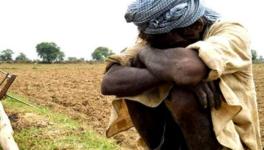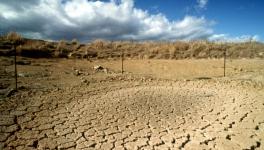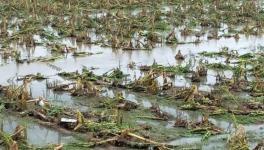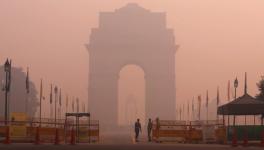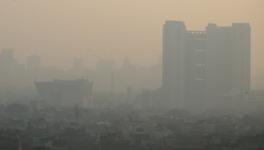Explainer: Rare La Nina Occurrence for Three Consecutive Years
The Australian Bureau of Meteorology (BOM) recently declared that a rare third La Nina is under way. On August 25, the BOM forecasted a 70% chance of La Nina though USA and UK weather agencies had said that the event was already under way.
The third consecutive occurrence of the climatic event after 2020 and 2021 is rare although not unheard of. Previous examples of such consecutive events occurred in 1973-1976 and 1998-2001.
The climatic event can have serious consequences in several parts of the world. What exactly is La Nina? It is a natural phenomenon in the climate cycle involving atmospheric and oceanic conditions. During this period, sea surface temperatures in the tropical Pacific Ocean, especially in the central and eastern Pacific, get colder than average.
Contrarily, during another phenomenon called El Nino, sea surface temperatures become warmer than average in the equatorial Pacific Ocean.
Both the El Nino and La Nina vary periodically and both phases combined are termed El Nino Southern Oscillation (ENSO), which impacts rainfall patterns, global atmospheric circulation as well as atmospheric pressure across the globe. The variability brings in shifts in weather patterns where some parts of the world face drought and others bear the brunt of floods. This year’s La Nina is likely to result in another wet and relatively cool spring and summer on Australia’s east coast.
El Nino or La Nina usually lasts for nine months or a year. Typically, they develop in March-June and become strongest in November-January in the northern hemisphere and slowly get weaker by March or April next year. Not only La Nina, but El Nino also has a history of breaking the normality—for example, ‘Godzilla’, which spread over 19 months in 2015-16.
The BOM has predicted a weaker and shorter La Nina compared to the previous ones. However, noteworthy is the probable relation that La Nina might have with anthropogenic (man-made) climate change. Although it is still not very clearly understood how events like La Nina are linked to climate change, or precisely the greenhouse effect, there are some preliminary hints that La Nina and El Nino can acquire more strength and become more frequent with climate change.
A Nature paper published in 2015 showed that La Nina can become more frequent and intensified under greenhouse warming. The study, based upon climate models, stated that it is likely that the frequency of extreme La Nina would double from 1 in every 23 years to 1 in 13 years in the future.
Again, this would be followed by extreme El Nino. Thus, the study projected frequent swings of opposite extreme weather events. Moreover, La Nina along with regional climate may also get stronger in many parts of the world, including Australia, as suggested by another study published early this year.
La Nina will also impact the Indian weather system. In a statement to Down to Earth, Raghu Murtugudde, a professor in the department of atmospheric and oceanic science at the University of Maryland, USA, said, “In India, we will see the monsoon extending up to October due to La Nina. The India Meteorological India (IMD) has predicted that monsoon withdrawal may begin in the first week of September but it is likely that some parts of India may witness heavy rains.”
The US east and west coasts usually experience hurricanes during August. “But we haven’t had any such event this time. This might be the quietest season in the past 30 years. Though statistically, the monsoon is in surplus, there are many parts where rains have been below normal. This is because Pacific and Arctic warming is affecting the monsoon,” Murtugudde added.
The IMD reportedly said that La Nina is prevailing over the equatorial Pacific Ocean. La Nina, probably expected to extend till November, can have some negative impacts also, especially on Indian farming. Rains in this period would bring heavy losses to Kharif crops, which are usually harvested beginning from September-end or early October.
If it rains, standing crops will have to face severe losses. Rain, even if not in the peak harvesting season but a little late, may also have damage crops. Usually, farmers harvest crops and keep it in stock for few days before selling them. Rains then will damage the crops.
Get the latest reports & analysis with people's perspective on Protests, movements & deep analytical videos, discussions of the current affairs in your Telegram app. Subscribe to NewsClick's Telegram channel & get Real-Time updates on stories, as they get published on our website.











